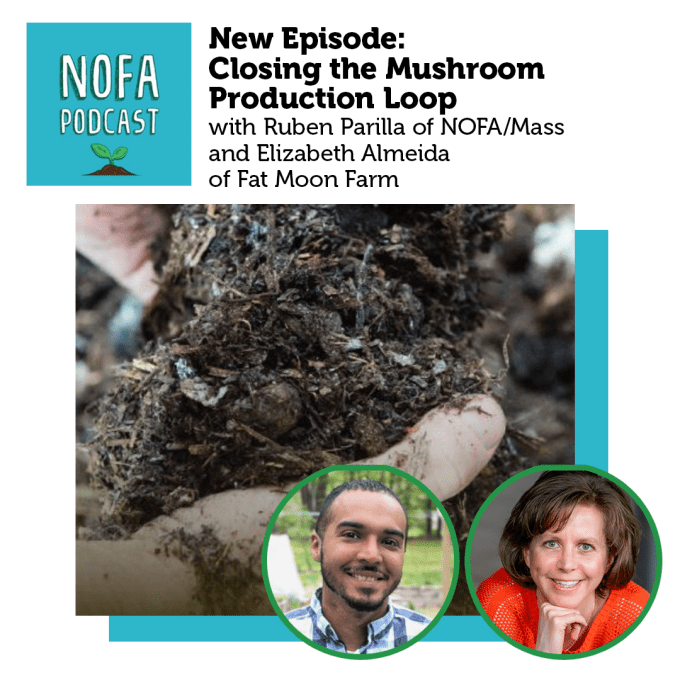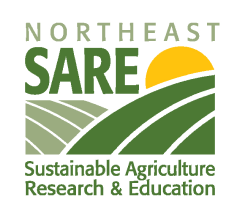
In this episode, Rubén Parrilla, NOFA/Mass’ Education Director and Technical Services Manager, discusses using spent mushroom substrate, the woody fungi-inoculated byproduct of mushroom farming, to improve soil health. Teeming with microbes, spent mushroom substrate is nutrient-rich and abundant with known benefits as a soil amendment. As a part of our Partnership Grant funded by the Northeast Sustainable Agriculture Research and Education (SARE) program, NOFA/Mass evaluated a sustainable outlet for existing SMS surplus in the Northeast while also improving the soil health and microbial communities of vegetable farms.
Rubén is joined by Liz Almeida, mushroom farmer and owner of Fat Moon Farm, and host Tony Kennette in a discussion on closing the mushroom production loop by using this readily-available byproduct on specialty crop farms in Massachusetts. They discuss the process and biology at work when combining spent mushroom substrate with compost before applying it to production beds. Listeners also learn about the essential role soil microbes play in contributing to soil health, crop resiliency, and productivity. There’s mush room for excitement in this fun-guide to the latest discoveries on microbial activity and soil applications of spent mushroom substrate.
To find out more about Fat Moon Farm visit https://fatmoonmushrooms.com/
To find more information on the Northeast Organic Farming Association chapter in your state please visit us at https://nofa.org/
For additional information on upcoming workshops, articles and NOFA/Mass project updates, please follow our NOFA/Mass Facebook page and join our mailing list. https://www.nofamass.org/
This material is based upon work supported by the National Institute of Food and Agriculture, U.S. Department of Agriculture, through the Northeast Sustainable Agriculture Research and Education program under subaward number ONE22-422. Any opinions, findings, conclusions, or recommendations expressed in this publication are those of the author(s) and do not necessarily reflect the view of the U.S. Department of Agriculture.

